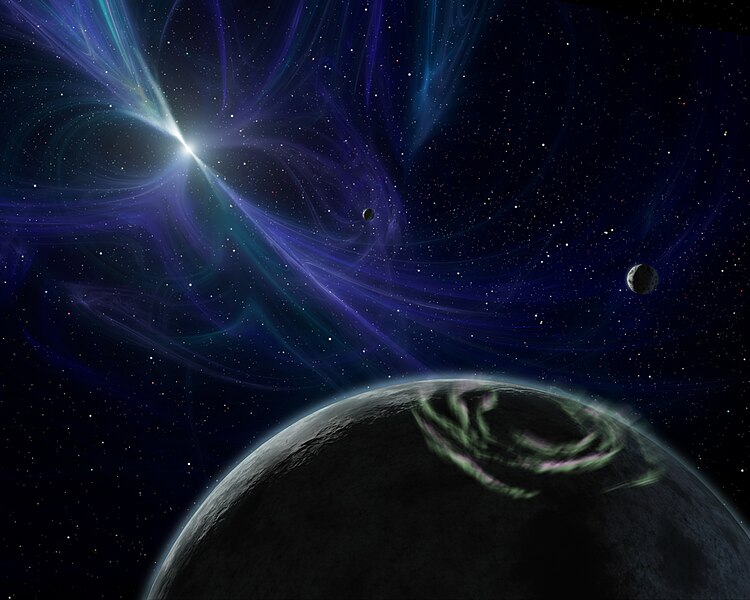Plik:Artist's concept of PSR B1257+12 system.jpg

Rozmiar podglądu – 750 × 600 pikseli. Inne rozdzielczości: 300 × 240 pikseli | 600 × 480 pikseli | 960 × 768 pikseli | 1280 × 1024 pikseli | 2560 × 2048 pikseli | 3000 × 2400 pikseli.
Rozmiar pierwotny (3000 × 2400 pikseli, rozmiar pliku: 2,66 MB, typ MIME: image/jpeg)
Historia pliku
Kliknij na datę/czas, aby zobaczyć, jak plik wyglądał w tym czasie.
| Data i czas | Miniatura | Wymiary | Użytkownik | Opis | |
|---|---|---|---|---|---|
| aktualny | 00:35, 15 kwi 2006 |  | 3000 × 2400 (2,66 MB) | Superborsuk | * '''Source''': [http://www.spitzer.caltech.edu/Media/releases/ssc2006-10/ssc2006-10c.shtml] * '''Image Credit''': NASA/JPL-Caltech * '''Image produced by''': R. Hurt (SSC) |
Lokalne wykorzystanie pliku
Następujące strony korzystają z tego pliku:
Globalne wykorzystanie pliku
Ten plik jest wykorzystywany także w innych projektach wiki:
- Wykorzystanie na af.wikipedia.org
- Wykorzystanie na ar.wikipedia.org
- Wykorzystanie na ast.wikipedia.org
- Wykorzystanie na be-tarask.wikipedia.org
- Wykorzystanie na be.wikipedia.org
- Wykorzystanie na bg.wikipedia.org
- Wykorzystanie na bn.wikipedia.org
- Wykorzystanie na ca.wikipedia.org
- Wykorzystanie na de.wikipedia.org
- Wykorzystanie na en.wikipedia.org
- Neutron star
- Wikipedia:Selected anniversaries/January 9
- PSR B1257+12
- Pulsar
- Timeline of Polish science and technology
- Methods of detecting exoplanets
- Wikipedia:WikiProject Astronomy/Image Review
- User:Spark Moon
- User:WilyD/potential
- PSR B1257+12 A
- PSR B1257+12 B
- PSR B1257+12 C
- Template:PSR B1257+12
- User:CatJar
- User:Tr00rle
- Wikipedia:Userboxes/Science/Astronomy
- List of Polish inventors and discoverers
- User:Nrco0e/Userboxes
- User:Kepler-1229b/sandbox/PSR 1257+12 D
- User:Dronebogus/Basement
- Habitability of neutron star systems
- User:Nrco0e/Userboxes/Pulsarplanets
- Pulsar planet
- Wikipedia:Main Page history/2024 January 9
- Wykorzystanie na en.wikinews.org
- Wykorzystanie na eo.wikipedia.org
- Wykorzystanie na es.wikipedia.org
Pokaż listę globalnego wykorzystania tego pliku.


